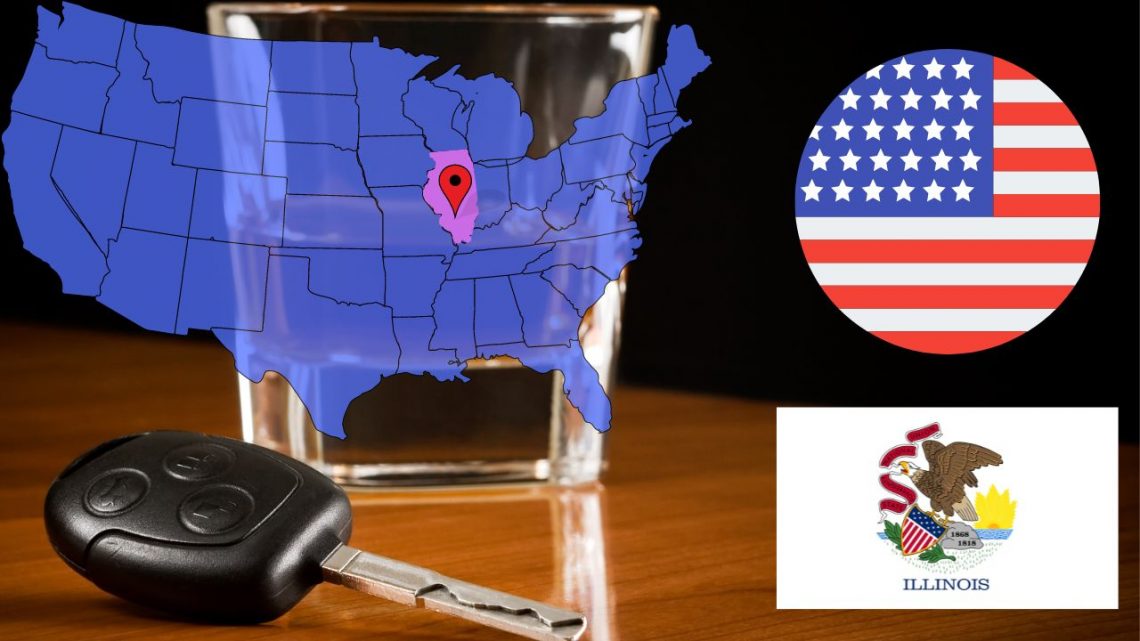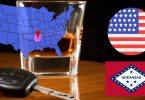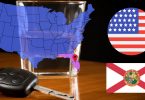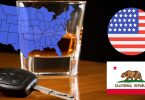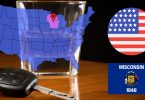In Illinois, the maximum legal blood alcohol content (BAC) limit is set at 0.08%, equivalent to 80 milligrams of alcohol per 100 milliliters of blood.
What is the Legal Alcohol Limit for Driving in Illinois?
In Illinois, the legal alcohol limit for driving varies depending on the category of the driver. These limits are established to enhance road safety and reduce alcohol-related accidents. Here’s a breakdown of the legal blood alcohol content (BAC) limits for different driver categories:
- Regular Drivers: The legal BAC limit is 0.08%. This applies to most drivers operating personal vehicles.
- Commercial Drivers: For those holding a commercial driver’s license, the legal BAC limit is reduced to 0.04%, reflecting the higher responsibility associated with operating commercial vehicles.
- Minors (Under 21): Illinois enforces a zero-tolerance policy for underage drivers. It is illegal for minors to drive with any detectable amount of alcohol in their system, emphasizing the state’s commitment to preventing underage drinking and driving.
Drink and Drive Penalties and Punishments in Illinois
Impaired driving remains a grave concern in Illinois, leading to numerous fatalities, severe injuries, and extensive property damage annually. The consequences of drinking and driving extend far beyond immediate harm, affecting lives and communities deeply. It’s crucial to stay informed about the legal ramifications of such actions in Illinois. Below is a detailed overview of the penalties and punishments associated with DUI offenses. For the most current information, always refer to the official state’s website.
DUI Conviction Penalties for Adults
-
First DUI Conviction:
- Minimum one-year loss of full driving privileges.
- Possible imprisonment for up to one year.
- Maximum fine of $2,500.
- For BAC of .160 and above: mandatory minimum fine of $500 and 100 hours of community service.
-
Second DUI Conviction:
- Minimum five-year loss of full driving privileges for a second conviction within a 20-year period.
- Mandatory five days imprisonment or 240 hours community service.
- Possible imprisonment for up to one year.
- Maximum fine of $2,500.
- For BAC of .160 and above: mandatory minimum fine of $1,250 and 2 days in jail.
-
Third DUI Conviction (Class 2 Felony):
- Minimum ten-year loss of full driving privileges.
- Possible imprisonment for up to seven years.
- Maximum fine of $25,000.
- For BAC of .160 and above: mandatory minimum fine of $2,500 and 90 days in jail.
-
Aggravated DUI (Class 4 Felony) following a crash causing great bodily harm or permanent disfigurement:
- Minimum of two-year loss of full driving privileges.
- Mandatory ten days imprisonment or 480 hours community service (with probation or conditional discharge).
- Possible imprisonment for up to twelve years.
- Maximum fine of $25,000.
Teenage Drinking and Driving
Drivers under 21 are disproportionately involved in fatal crashes linked to alcohol. The consequences of underage DUI are severe, potentially altering young lives dramatically:
-
First Underage DUI Conviction:
- Loss of full driving privileges for a minimum of 2 years.
- Possible imprisonment for up to 1 year.
- Maximum $2,500 fine.
- For BAC of .160 and above: mandatory minimum fine of $500 and 100 hours of community service.
-
Second Underage DUI Conviction:
- Minimum five-year loss of full driving privileges for a second conviction within a 20-year period.
- Mandatory five days imprisonment or 240 hours community service.
- Possible imprisonment for up to one year.
- Maximum fine of $2,500.
- For BAC of .160 and above: mandatory minimum fine of $1,250 and 2 days in jail.
-
Third Underage DUI Conviction (Class 4 Felony):
- Minimum ten-year loss of full driving privileges.
- Possible imprisonment for up to seven years.
- Maximum fine of $25,000.
- For BAC of .160 and above: mandatory minimum fine of $2,500 and 90 days in jail.
-
Aggravated DUI (Class 4 Felony) following a crash:
- Driving privileges revoked for a minimum of two years.
- Possible imprisonment for up to 12 years.
- Maximum fine of $25,000.
Other Related Penalties
-
Underage Illegal Transportation of an Alcoholic Beverage:
- Maximum fine of $1,000.
- Driver’s license suspension for first conviction.
- Driver’s license revocation for a second conviction.
- Summary Suspension:
- First offense with BAC of .08 or greater: six-month driver’s license suspension.
- Refusal to submit to chemical tests: twelve-month license suspension.
- Subsequent offenses result in longer suspensions.
-
Using a Fake Illinois Driver’s License or ID Card:
- Penalties include 1-3 years in prison and a maximum $25,000 fine.
Zero Tolerance Law
Effective from January 1, 1995, this law enforces a strict no-alcohol policy for drivers under 21, with certain exceptions for religious services and prescribed medications. Any trace of alcohol can lead to a suspended driver’s license.
Understanding these laws and consequences is crucial for all drivers in Illinois. The state’s zero-tolerance approach towards underage drinking and driving underscores the importance of responsible behavior behind the wheel. Always refer to the official state website for the most accurate and up-to-date information.
How Can I Calculate if My Alcohol Blood Limit is Legal in Illinois?
In Illinois, as in the rest of the United States, the legal limit for blood alcohol content (BAC) for most drivers is 0.08%. For commercial drivers, this limit is lower at 0.04%, and for drivers under 21, any detectable amount of alcohol is illegal. The state takes impaired driving seriously, employing various methods to identify those driving under the influence. Law enforcement officers typically use breathalyzers during traffic stops to quickly measure a driver’s BAC. These devices offer a non-invasive, immediate indication of a driver’s intoxication level, allowing officers to make informed decisions on the spot.
As a former phlebotomist with a decade of experience, I’ve seen firsthand the consequences of impaired driving and the importance of understanding one’s own limits. Here are two methods I recommend for checking your BAC level:
- Use a High-Quality Alcohol Breathalyzer:
- For those looking to measure their BAC accurately, the BACtrack S80 is an excellent choice. It’s known for its professional-grade accuracy and is both DOT & NHTSA approved and FDA 510(k) cleared. This device is highly recommended for personal use, especially for drivers in Illinois, where underestimating BAC levels can easily lead to impaired driving. Keeping a BACtrack S80 in your car could be a wise decision, providing you with a reliable measure of whether you’re legally safe to drive.
- Utilize a BAC Calculator:
- Alongside other phlebotomists and with the help of web developers, I’ve created an online BAC calculator. This tool estimates your BAC level based on information you provide, such as the amount of alcohol consumed, the timeframe of consumption, your weight, and gender. While this method is less direct than using a breathalyzer, it can still offer valuable insight into your potential impairment level.
It’s crucial to remember that both of these methods are not 100% accurate and should not be used as a definitive measure of your ability to drive legally or safely. Factors such as metabolism, medication, and health conditions can affect BAC levels and how alcohol impacts your body. Therefore, these tools should be used as guides to help you make informed decisions about driving after consuming alcohol.
Ultimately, the safest choice is not to drive if you’ve consumed alcohol or if there’s any doubt about your sobriety. These tools can help you understand your limits and encourage safer driving practices, potentially preventing DUI incidents and the severe consequences that come with them.
Ways to Avoid Driving with a High BAC in Illinois
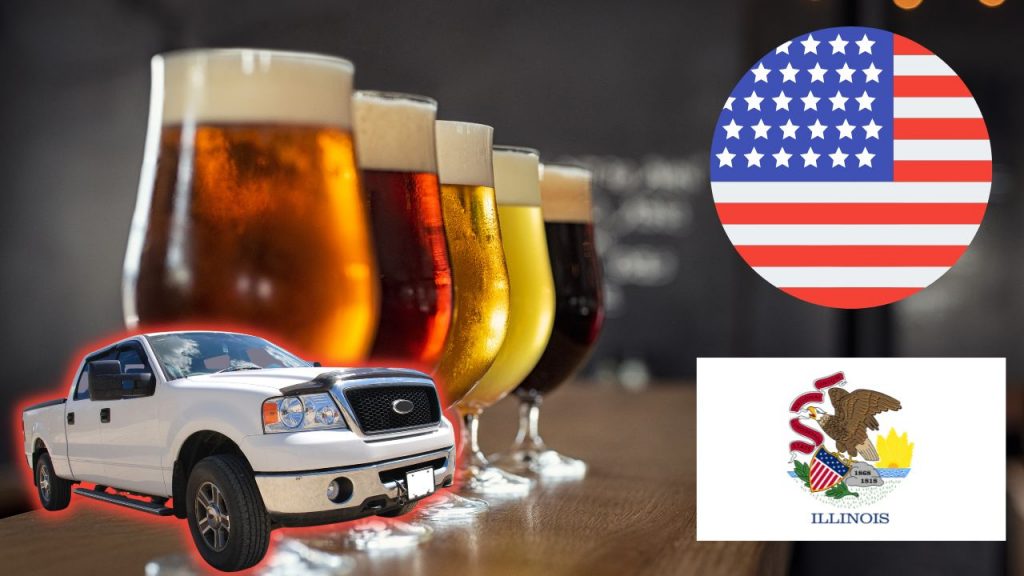
Driving under the influence of alcohol is a serious offense in Illinois, with stringent penalties that can have long-lasting effects on your life. To ensure your safety and the safety of others, it’s crucial to plan ahead and consider alternative transportation options if you’ve been drinking. Here are some practical suggestions for avoiding driving with a high BAC:
- Utilize Rideshare Apps or Local Taxi Services:
- In today’s digital age, finding a ride home after consuming alcohol is easier than ever. Rideshare apps like Uber and Lyft offer a quick and convenient way to get a safe ride home at any time. These apps are user-friendly and provide an estimate of your ride cost upfront, ensuring there are no surprises.
- Additionally, supporting local taxi companies is another excellent way to travel safely. In Aurora, for instance, you can rely on Urban Cab, while in Chicago, B & B Taxi Cab Inc. is a trusted provider. These local services offer the reliability and safety needed to ensure you reach your destination without the risk of driving impaired.
- Order a Designated Driver Service:
- If you find yourself having driven to a location but then realize you’ve consumed too much alcohol to drive back safely, consider using a designated driver service. Services like Elite Chauffeured Services in Aurora or Private Driver Chicago in Chicago offer professional drivers who can drive you home in your own vehicle. This way, you don’t have to leave your car behind and can ensure both you and your vehicle get home safely. Simply searching for “designated driver service” followed by your city name on Google can provide you with options in your area.
These preventative measures not only protect you from potential legal consequences but also contribute to the overall safety of our roads. Illinois law enforcement is vigilant about preventing DUI offenses, and by choosing alternatives to driving under the influence, you’re playing a part in making our communities safer.
Remember, planning ahead before you go out can make all the difference. Whether it’s booking a ride in advance or arranging for a designated driver, these steps can prevent the risk of DUI and its associated penalties. Stay safe and make responsible choices to ensure you and others on the road remain unharmed.
Sticking to DUI Laws in Illinois: Sad Statistics
In 2020, Illinois witnessed 1,194 drunk driving accidents, with 32% involving drivers exceeding the 0.08% BAC legal limit. To combat this, Illinois enforces strict DUI laws. It’s crucial to follow these and consider alternatives like taxis or designated drivers when drinking.
Staying informed about DUI laws through Illinois’s official website is vital. Driving after drinking, even with a low alcohol intake, is risky and should be avoided. If driving is necessary, ensure your BAC is within legal limits, using a certified breathalyzer for accuracy. Always prioritize safety and legal compliance by keeping abreast of the latest DUI regulations in Illinois.

